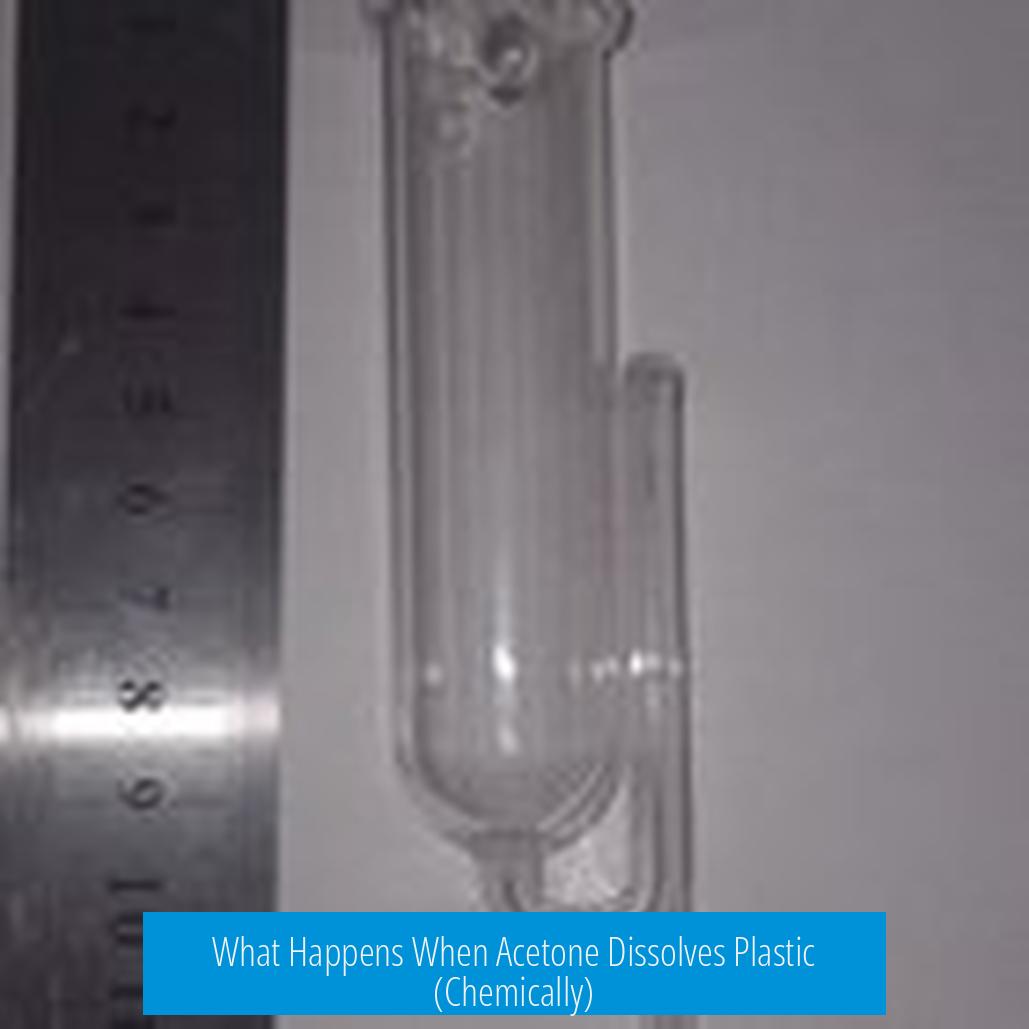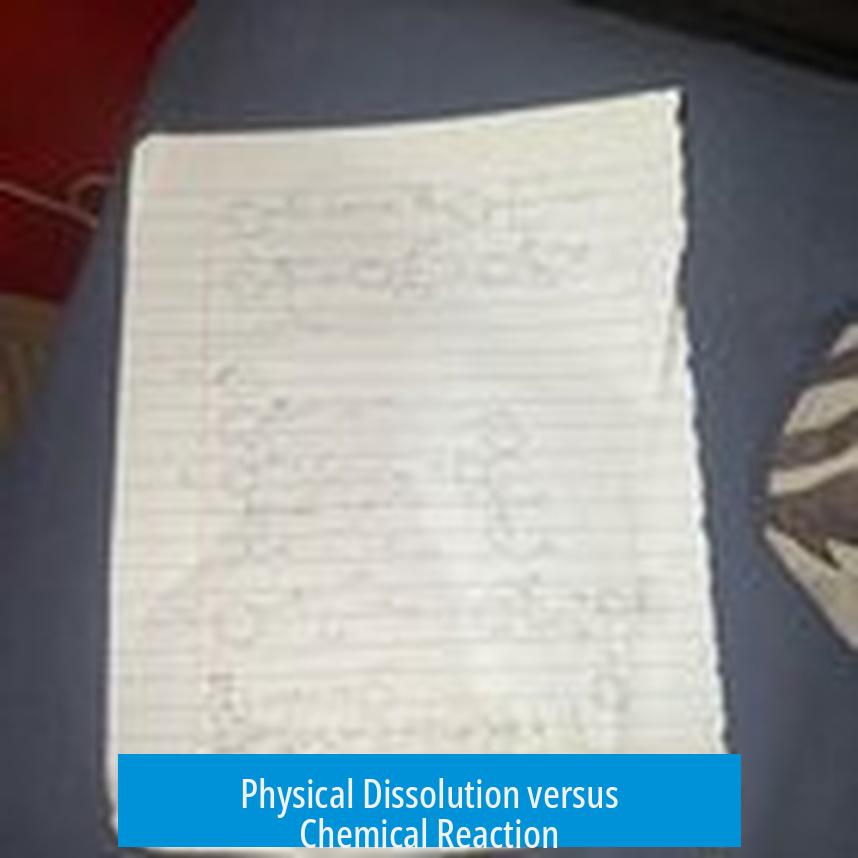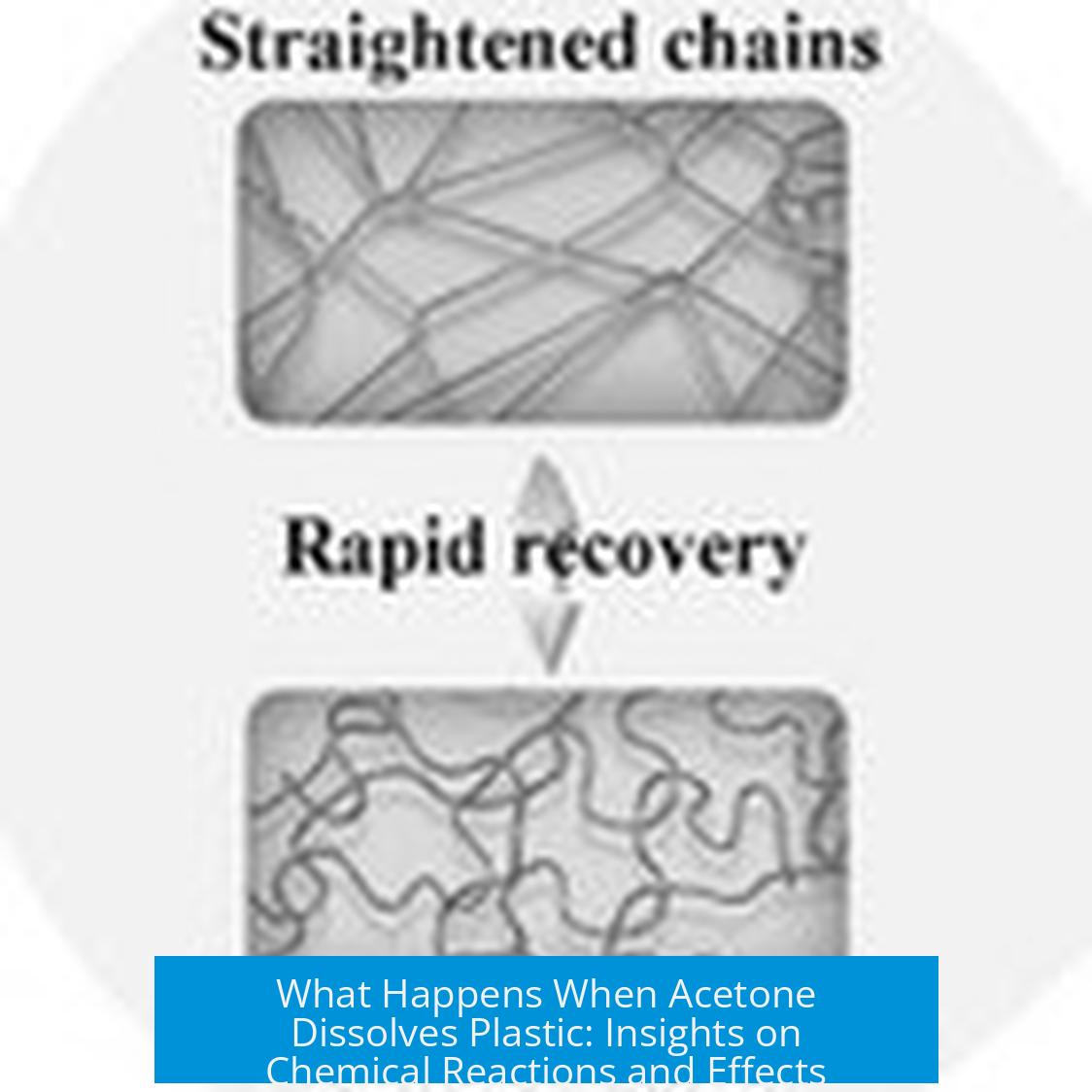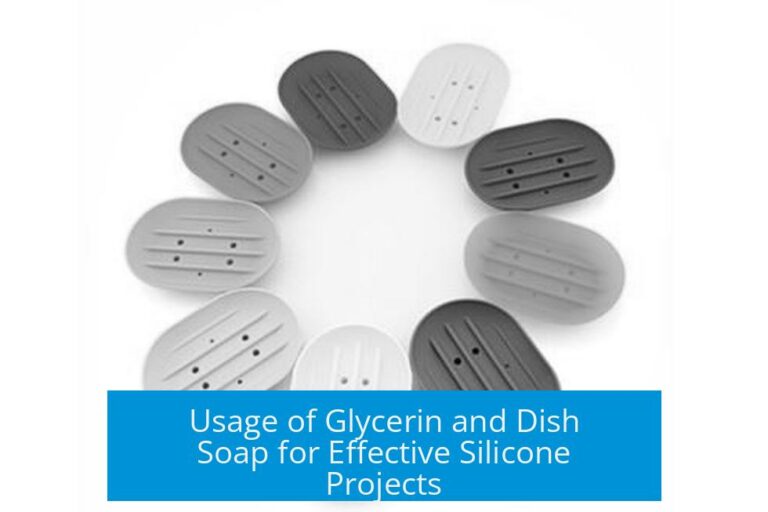What Happens When Acetone Dissolves Plastic (Chemically)?

When acetone dissolves plastic, it does not cause a chemical reaction but instead physically dissolves the plastic by disrupting its matrix, preserving the chemical integrity of the polymer. Essentially, the plastic undergoes a physical change, not a chemical one.
Physical Dissolution versus Chemical Reaction

Acetone interacts with certain plastics by breaking the intermolecular forces holding the polymer chains together. This process is akin to salt dissolving in water. The plastic softens or disintegrates without altering its chemical structure. If acetone evaporates, the plastic reforms into a solid shape identical to its original composition.
Solubility and “Like Dissolves Like”
The solubility depends on the chemical similarity between acetone and the plastic. Acetone is a ketone with a carbonyl group (C=O). It is not a hydrocarbon, unlike some plastics such as polyethylene or polypropylene, which consist mainly of carbon and hydrogen atoms.
Materials with similar polarity or functional groups dissolve each other more readily. Acetone dissolves only certain plastics, primarily those with polar characteristics that can interact with its carbonyl group. Non-polar plastics often resist dissolution.
Effects on Mixed Plastics
Some plastics are blends or composites of polymers. When acetone dissolves such mixed plastics, it can separate components based on their differing solubility. This can lead to partial dissolution or phase separation, rather than complete solvation.
Comparison with Chemical Degradation by Acids
Unlike acetone, strong acids such as hydrofluoric acid do not simply dissolve plastics physically. Instead, hydrofluoric acid chemically degrades plastic polymers by breaking their covalent bonds. This results in permanent structural damage and loss of material properties.
| Aspect | Acetone | Hydrofluoric Acid (HF) |
|---|---|---|
| Type of Interaction | Physical dissolution (no chemical reaction) | Chemical degradation (bond cleavage) |
| Effect on Polymer | Polymer remains chemically unchanged | Polymer broken into smaller fragments |
| Reversibility | Reversible upon acetone evaporation | Irreversible damage |
Summary of Key Points
- Acetone dissolves plastic physically without chemical bond breaking.
- Plastic’s chemical structure remains intact during acetone dissolution.
- Only plastics chemically compatible with acetone dissolve; others resist.
- Mixed plastics may separate components when exposed to acetone.
- Hydrofluoric acid chemically degrades plastics, unlike acetone.





Leave a Comment